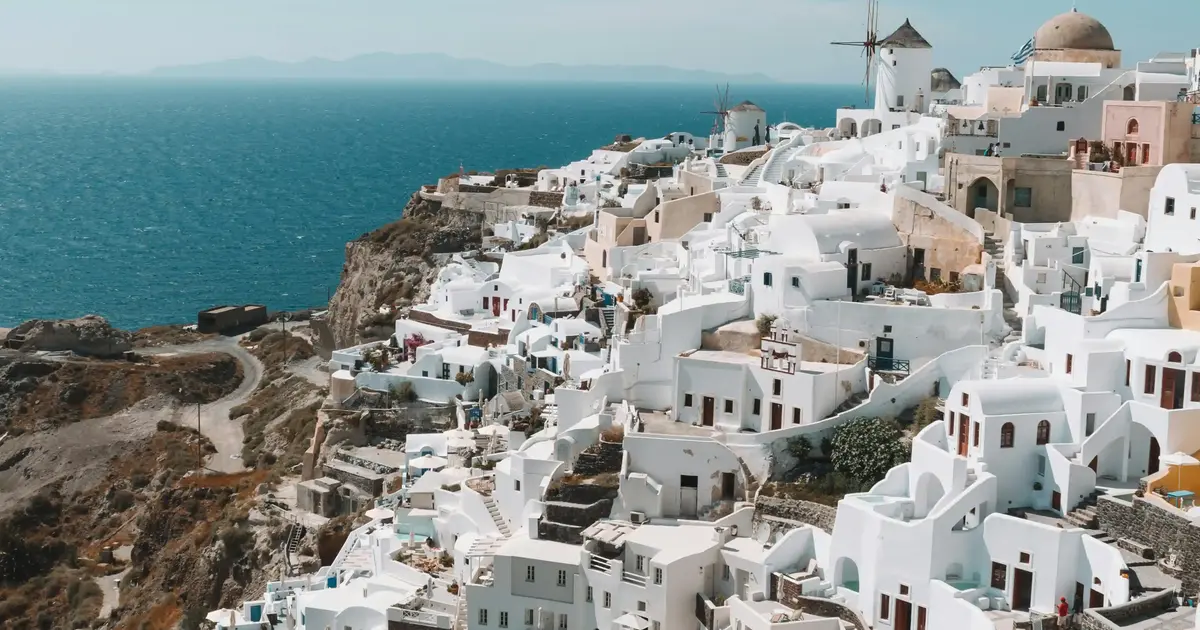Choosing the best time to go to Greece and Italy is key to ensuring a memorable vacation. Both countries offer unique experiences, from exploring ancient ruins to relaxing on beautiful beaches. In this guide, we’ll walk you through the best times to visit, especially during shoulder seasons, for a perfect trip in 2025.
Why Timing Matters: The Best Time to Visit Greece and Italy
When planning a trip to Greece and Italy, the timing of your visit can make a huge difference. The weather, tourist crowds, and travel costs all vary throughout the year, which means the ideal travel time depends on what you’re looking for. If you’re seeking fewer crowds, pleasant weather, and affordable prices, visiting during the shoulder seasons might be the perfect choice. These seasons, typically spring and fall, offer a balance of ideal conditions for sightseeing, outdoor activities, and cultural experiences.
Shoulder Seasons: The Sweet Spot for Greece and Italy
Reasons to Visit During Shoulder Seasons
-
Pleasant Weather: The temperatures are warm but not stifling, making it ideal for exploring cities, visiting ancient sites, and enjoying outdoor activities. The summer heat can be overwhelming, but shoulder seasons provide a comfortable balance.
-
Fewer Crowds: The peak summer months see massive crowds at popular attractions. During the shoulder seasons, you’ll experience less congestion, making your visit to famous sites like the Colosseum or Acropolis more enjoyable.
-
Lower Prices: Accommodation and flights tend to be more affordable during the shoulder seasons, helping you save money on your trip while still enjoying a high-quality experience.
-
Enjoyable Experiences: The shoulder seasons often coincide with local festivals, harvest celebrations, and cultural events, offering you an authentic, vibrant cultural experience.
The Best Time to Visit Greece
Spring (April to June): The Ideal Season for Exploring Greece
-
Why it’s the Best: Spring offers mild temperatures, ranging between 60-70°F (15-21°C), perfect for outdoor exploration. The landscapes are lush, and the tourist crowds are still manageable.
-
What to Do: Explore Athens’ ancient ruins, visit the beautiful beaches of Crete, or take a ferry to Santorini for fewer tourists and a more relaxed atmosphere.
-
Best Places to Visit: Athens, Santorini, Crete, Mykonos.
Autumn (September to November): The Perfect Time for Comfort and Culture
-
Why it’s the Best: The weather is still warm (70-80°F or 21-27°C), but the peak summer crowds have dissipated, making it an ideal time to visit.
-
What to Do: Attend the Thessaloniki International Film Festival or enjoy the harvest season in the wine-producing regions of Santorini and Nemea.
-
Best Places to Visit: Thessaloniki, Santorini, Crete, Rhodes.
Winter (December to February): Off-Season Tranquility
-
Why it’s the Best: For those who prefer cooler weather and fewer tourists, Greece’s winter season is perfect. However, it may be rainier and colder, especially on the mainland.
-
What to Do: Visit the ancient temples and enjoy fewer crowds, explore the archaeological sites, or take a peaceful winter walk through Athens.
-
Best Places to Visit: Athens, Thessaloniki, Delphi, Meteora.
The Best Time to Visit Italy
Late Spring (April to May): Ideal for Exploring Italy’s Iconic Cities
-
Why it’s the Best: Late spring offers pleasant temperatures between 60-75°F (15-24°C), with fewer crowds than the summer months.
-
What to Do: Explore the beauty of Florence’s art and architecture, enjoy Rome’s ancient landmarks, or relax on the Amalfi Coast without the peak season bustle.
-
Best Places to Visit: Florence, Rome, Venice, Amalfi Coast.
tober): A Perfect Balance of Weather and Experiences
-
Why it’s the Best: The weather is still warm (65-80°F or 18-27°C), with lower hotel rates and fewer crowds. The fall harvest season adds a local flair to your experience.
-
What to Do: Take part in the grape harvest festivals in Tuscany, visit Venice during the quieter months, or hike the hills of Cinque Terre.
-
Best Places to Visit: Tuscany, Venice, Rome, Lake Como.
Winter (November to March): A Winter Wonderland with Fewer Tourists
-
Why it’s the Best: Winter in Italy is much quieter, especially in cities like Rome and Florence, where you can enjoy the sights without long lines or packed streets.
-
What to Do: Explore Italy’s iconic landmarks in peace, attend the Venice Carnival (in February), or enjoy skiing in the Alps.
-
Best Places to Visit: Rome, Florence, Venice, Milan, Dolomites.
How to Choose the Best Time for Your Greece and Italy Vacation
When choosing the best time for your vacation, consider your preferences for weather, crowds, and budget. If you’re interested in outdoor activities and cultural festivals, spring and fall are great choices. For a quieter, more relaxed experience, winter might be ideal. Shoulder seasons offer a perfect blend of pleasant weather, lower prices, and fewer crowds. Make sure to plan based on the experiences you’re most excited about, whether it’s lounging on the beach or exploring ancient ruins.
Related Questions about Best Time to Go to Greece and Italy
-
What is the best time to visit Greece for beach lovers?
-
The best time to visit Greece for beach lovers is during late spring (May and June) and early fall (September to October). The weather is warm, and the beaches are less crowded compared to the peak summer months.
-
-
When is the cheapest time to travel to Italy?
-
Late fall (November) and winter (December to February) are generally the cheapest times to travel to Italy, as flights and accommodation prices tend to be lower.
-
-
Is it worth visiting Greece in the winter?
-
Yes, it’s a great time to visit if you prefer fewer crowds and don’t mind cooler, possibly rainy weather. Many cultural attractions and archaeological sites are less crowded, providing a more peaceful experience.
-
-
What is the best month to visit Greece and Italy for good weather?
-
The best months for good weather are late spring (April-May) and early fall (September-October). These months offer warm weather, lower prices, and fewer tourists than peak summer months.
-
-
Are there any major festivals in Greece and Italy during the shoulder seasons?
-
Yes, both countries host festivals during shoulder seasons. In Greece, the Thessaloniki International Film Festival (October) and local harvest celebrations are popular. In Italy, the grape harvest festivals in Tuscany and Venice Carnival (February) are major highlights.
-
-
How can I avoid crowds when visiting Greece and Italy?
-
To avoid crowds, visit during the shoulder seasons (spring and fall) when the weather is still great but the tourist traffic is lower. Try visiting popular attractions early in the morning or later in the day to avoid peak hours.
-
-
What is the best time to visit Greece for solo travelers?
-
Spring and fall are excellent for solo travelers, offering pleasant weather, fewer tourists, and the opportunity to engage with local culture through festivals and events.
-
-
Can you travel to Greece and Italy during the winter months?
-
Yes, traveling during winter offers a quieter experience, though it’s colder and rainier. If you enjoy off-season tranquility and cultural exploration, this can be an ideal time.
-
-
How does the cost of traveling in Italy compare to Greece in the shoulder seasons?
-
Both Greece and Italy are more affordable during shoulder seasons than in summer. However, Italy, particularly in cities like Venice and Florence, can still be pricier than Greece, especially for accommodation and dining.
-
-
How do people travel in Greece: train, car, or ferry?
-
People typically use train for travel between major cities, car for exploring rural areas, and ferries for island-hopping. Each mode of transport is ideal depending on the region and the traveler’s preferences.
-
Final Thoughts: Best Time to Go to Greece and Italy
Choosing the best time to visit Greece and Italy largely depends on your preferences for weather, crowds, and budget. Whether you’re planning for sunny beach days or quieter winter explorations, both countries offer something for every season. By opting for the shoulder seasons, you can enjoy the best of both worlds—pleasant weather, fewer crowds, and lower prices. Start planning your dream vacation today and experience all that Greece and Italy have to offer in 2025!





